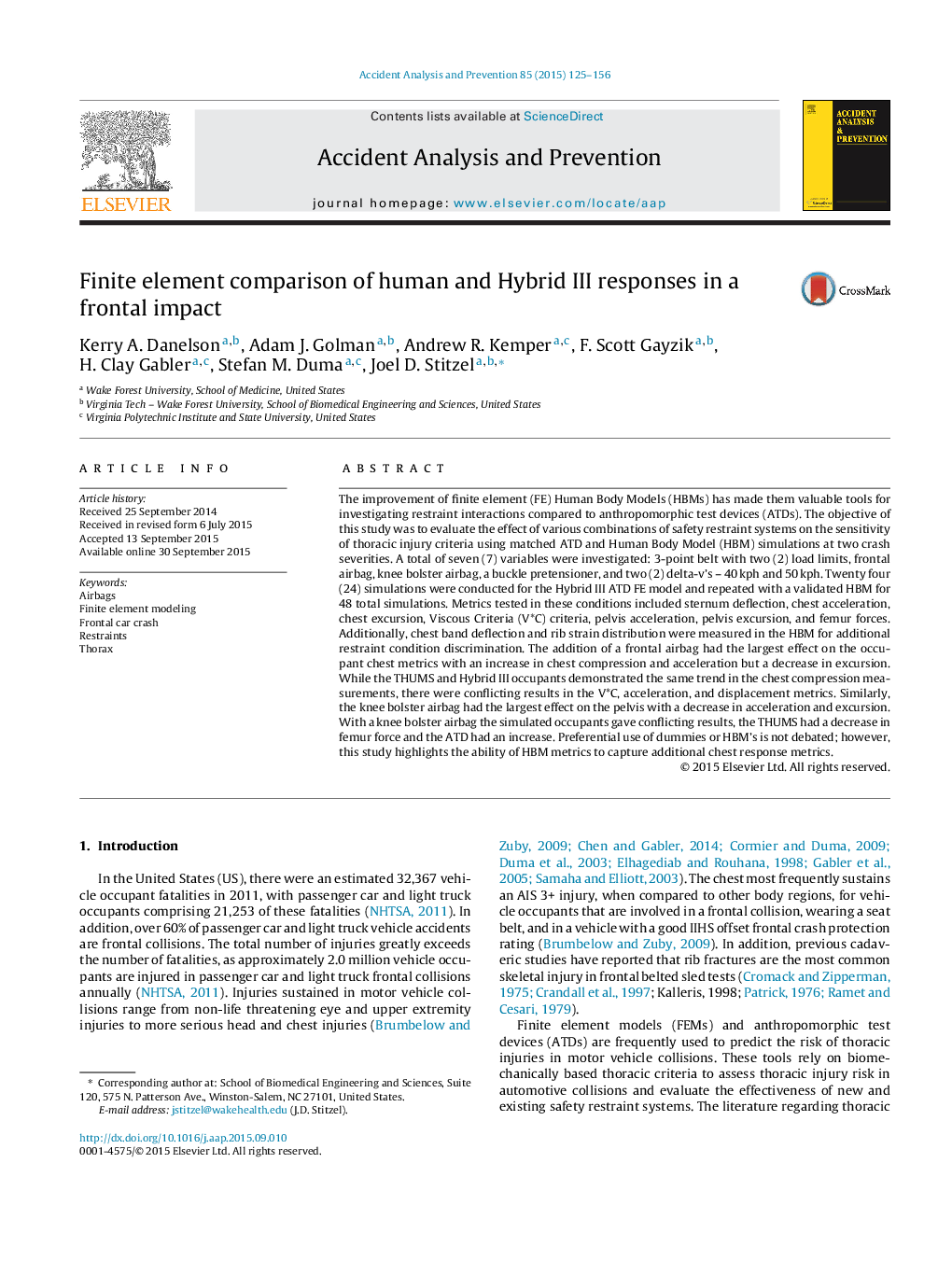| کد مقاله | کد نشریه | سال انتشار | مقاله انگلیسی | نسخه تمام متن |
|---|---|---|---|---|
| 572131 | 1452912 | 2015 | 32 صفحه PDF | دانلود رایگان |
• Various restraint configurations were simulated in a reduced vehicle.
• For a human body and ATD model metrics were examined to quantify response.
• Chest metrics were most affected by the addition of the frontal airbag.
• Pelvis and femur metrics were most affected by adding the knee bolster airbag.
• The simulated occupants gave conflicting results with the knee bolster airbag.
The improvement of finite element (FE) Human Body Models (HBMs) has made them valuable tools for investigating restraint interactions compared to anthropomorphic test devices (ATDs). The objective of this study was to evaluate the effect of various combinations of safety restraint systems on the sensitivity of thoracic injury criteria using matched ATD and Human Body Model (HBM) simulations at two crash severities. A total of seven (7) variables were investigated: 3-point belt with two (2) load limits, frontal airbag, knee bolster airbag, a buckle pretensioner, and two (2) delta-v's – 40 kph and 50 kph. Twenty four (24) simulations were conducted for the Hybrid III ATD FE model and repeated with a validated HBM for 48 total simulations. Metrics tested in these conditions included sternum deflection, chest acceleration, chest excursion, Viscous Criteria (V*C) criteria, pelvis acceleration, pelvis excursion, and femur forces. Additionally, chest band deflection and rib strain distribution were measured in the HBM for additional restraint condition discrimination. The addition of a frontal airbag had the largest effect on the occupant chest metrics with an increase in chest compression and acceleration but a decrease in excursion. While the THUMS and Hybrid III occupants demonstrated the same trend in the chest compression measurements, there were conflicting results in the V*C, acceleration, and displacement metrics. Similarly, the knee bolster airbag had the largest effect on the pelvis with a decrease in acceleration and excursion. With a knee bolster airbag the simulated occupants gave conflicting results, the THUMS had a decrease in femur force and the ATD had an increase. Preferential use of dummies or HBM's is not debated; however, this study highlights the ability of HBM metrics to capture additional chest response metrics.
Journal: Accident Analysis & Prevention - Volume 85, December 2015, Pages 125–156
